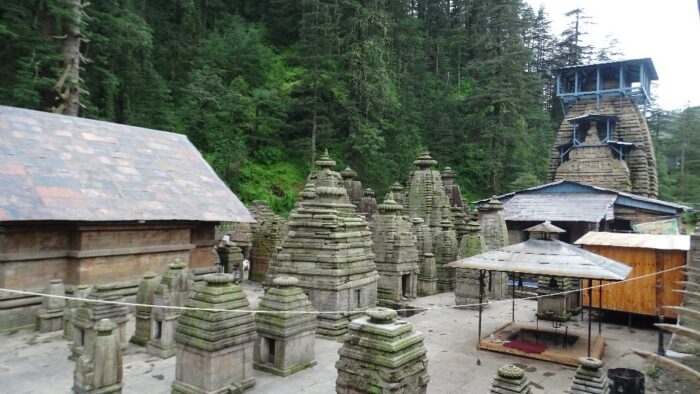Jageshwar Group of Temples, Uttarakhand is one of the most spectacular sites situated amidst the dense Deodar forest of Kumaun region. The site houses many temples of various sizes in Nagara style or North Indian style of Temple Architecture. The time period of the temple group ranges from 7th CE to 12th CE and believed to be initially built during the Katyuri Dynasty of Kumaun. According to local traditions, it’s believed that Adi Shankracharya visited this temple complex in 8th CE during his pilgrimage to the Himalayas.

The main temple i.e. Jageshwar houses the deity of Lord Jageshwar or Jagnath in the form of Lingam. Around the main temple there are various small shrines of various sizes and temple forms. One can easily find the temples of Nagara style having Latina, Phmasana and Vallabhi Shikhar forms around the main shrine each having a small lingam inside.

Jageshwar is considered to be one of the oldest centers of Lakulish Shaivism. The Lakulish Shaivism originated in a place called Kayavarohan near present-day Vadodara, Gujarat around 1st CE and spread across the various parts of the country. It’s one of the oldest forms of Shaivism initiated by Lakulish who is generally depicted as holding a stick with Urdhva Linga (erect penis) and surrounded by his four disciples. According to locals they often see a man walking with a long stick around the dense forest of Jageshwar.

The temple is surrounded by numerous beautiful artwork and sculptures dating back to 7th CE and onwards. There is a beautiful panel of Shiva as Nataraja on the lintel of one of the small shrines around the Jageshwar Temple. Here, a four-handed Shiva is depicted dancing in full ecstasy surrounded by Paravati, Kartikeya, Ganapati and other attendants playing various musical instruments.

The temple complex also houses the famous temple of Pushti Devi having a peculiar roof form known as Vallabhi which is mostly seen in the Himalayan region of India. This roof form has its roots attached with the Buddhist architecture where it’s often depicted in various rock-cut caves around the country often known as Shala.
Photos and content by Sushant Bharti, a Conservation Architect. Sushant has done his post graduation from the School of Planning & Architecture, New Delhi. His main area of research is on the ‘Cultural Heritage of Braj’ and ‘Indian Temple Architecture’.




